-
Ban polystyrene use in the UKI believe we need to ban the use of polystyrene used in packaging in the UK to ensure the health of our people and the planet. Currently, there is a campaign to stop micro beads but this needs to extend to polystyrene. A new report from the National Research Council in the US has upheld the listing of styrene as “reasonably anticipated to be a human carcinogen” in the National Toxicology Program’s 12th Report on Carcinogens (RoC). There is “convincing relevant information” in mechanistic studies that observed DNA damage in human cells that had been exposed to styrene. Not only is polystyrene toxic to humans, causing cancers, it pollutes the environment much like plastic. I have spent many days on beach cleans and have found these particles littered across the shore break. It breaks down into smaller particles which look like food, confusing fish and mammals, who then digest it. The polystyrene, after being digested by fish then ends up in our food chain. I've seen small children playing with this 'snow', I've seen the stomach lining of fish and birds littered with it. These are the fish that die from it, what of the fish that end up on our table? I call for the use of this substance in all packaging to be banned as a matter of urgency. Take away packaging litters our streets, it is extremely difficult to recycle, often ending up in land-fill and in our seas. There are numerous affordable cardboard, vegetable starch alternatives that break down in an environmentally friendly manner, easily preventing the pollution of our planet and our bodies. Please stand with me to ensure that this small, simple change is implemented by our government making a big difference to all of our lives.503 of 600 SignaturesCreated by Tyrone Probert
-
Stop unethical fracking gas being imported or used in scotland or the rest of the UK.Fracking causes misery worldwide, with death's, cancers and disease. It is unethical and should be banned. It is no different to importing blood diamonds. This is supposedly banned so why not shale gas? I say we ban its use. I say ban its usage and the imports and drilling for it will end.513 of 600 SignaturesCreated by daniel kelly
-
Clean up London air and reduce pollution by busesIn the UK 40,000 people die early each year as a result of dirty air. We need to do everything we can to tackle this. One of the things that adds to the pollution in London is that bus drivers do not switch off their engines when their buses are stationary or parked. Anti-idling devices would help reduce emissions. Diesel emissions are causing ill-health in children and vulnerable adults. The cost of retro-fitting anti-idling devices would be more than covered by the fuel saving.612 of 800 SignaturesCreated by Maria Sheppard
-
Save the Abbey LineClosing existing rail lines and converting them to BRT is a bad idea for five key reasons: • environmental impact • passenger comfort and perception • loss of network benefits • reliability • cost It is widely acknowledged that given a choice, people see rail / light rail as a superior mode to bus, and would be more encouraged to switch to rail should the service be enhanced. Removing the line from the rail system means that people would see it as ‘just another bus route’, rather than as a feeder to the rest of the rail network. Bus usage has been on a steady downward trend outside London since 1986 whilst rail usage is at record high levels. On the environmental impact, a simple appreciation of physics confirms that the rolling resistance of a rubber-tyred vehicle on a concrete track is significantly higher than steel wheels on steel rail. Furthermore the imposition of BRT would imply dismantling of the existing Overhead Line Equipment (OHLE) which allows trains / light rail to operate with zero emissions at the point of use. On the contrary, it is assumed that buses operating under BRT would have to be self-powered, each having to carry around their own power unit, with consequent penalty for weight and hence fuel consumption. If they were to be diesel-powered, this raises serious questions about the impact on local air quality. The consequences of pouring thousands of tonnes of concrete to create the guideways in itself is a CO2-intensive activity, additionally noting that doing so through Bricket Wood would be within a designated Site of Special Scientific Interest (SSSI). On reliability and cost, a ‘pioneering’ scheme on the old Cambridge to St Ives railway line suffered severe delays, cost overruns and quality failings – which are still being addressed. To make the service more attractive and boost ridership, ABFLY have long been calling for an increase in the service frequency on the single track line, which provides a train every 45mins in each direction. They believe this can be achieved by installing a ‘passing loop’ and bringing in a second train to operate a higher frequency shuttle. The costs of building a passing loop are thought to be somewhere between £4m and £7m based on historical estimates. Whilst the Hertfordshire Rail Strategy, published last July, dismisses the passing loop as, “unlikely to be considered by funders as a priority, as it would require provision of two train sets and train crew in place of the current one, making it difficult to achieve a favourable business case”, no such business case has ever been presented for public scrutiny, and in any case it is thought to be severely undermined by a high level of usage going unrecorded because of ticketless travel on the branch. This issue has recently been acknowledged by the Department for Transport’s very own figures. According to the Transport Vision document, the cost of the BRT scheme is quoted at £90m, over ten times the price of a passing loop, but no business case is presented for BRT either.115 of 200 SignaturesCreated by Dave Horton
-
Car pollutionIt is clear the world is heading for a man climate change disaster . Sending the wrong nessage out to car makers and customers will speed up the process of change , with more storms and floods. It I'd to to accept our social responsibilities and urge the government to think again.3 of 100 SignaturesCreated by Stephen Cape
-
Rethink Hinkley PointBecause 1. Buying Hinkley Point is a colossal mistake 2. Mrs May inherited the project from Osborne & Cameron, keen to develop Chinese trade, 3. but now finds it politically embarrassing to back out of this very bad deal Consequently, we need to inform the public 1. why the deal is bad 2. that there are better alternatives and 3. the Chinese and French can be placated while serving British interests Why is Hinkley Point such a bad deal? 1. It is far too expensive 2. There are undeclared costs associated with the nuclear legacy which make nonsense of published costs – we will have to look after the abandoned reactors and radioactive waste for centuries and nobody knows how to do it or cares how much it will cost 3. There is a huge risk of failure – no such reactor has yet been completed and the ones started (Finland 2005, France 2007) are unfinished, in deep technical trouble and seriously (by billions each) over budget 4. The risks are ultimately borne by us, not the French contractors or Chinese financiers – the project is too big to be allowed to fail by the Government of the day (not Mrs May) 5. Nuclear technology is in any case the wrong choice for filling our anticipated supply gap: nuclear energy gets more expensive as new ideas to improve safety are incorporated in the design; in contrast other well established methods of electricity generation such as gas or coal-fired turbines and particularly offshore wind and solar energy get cheaper by the day owing to accumulating experience and rapid technical development 6.IF it has to be nuclear, the Hinkley Point reactors are too big (small modular reactors can be built instead as needed, at a fraction of the cost and in much less time) and probably also the wrong technology (a debatable, but only secondary, point) Why is the Government pursuing it? The above problems with the Hinkley project are well known to Mrs May and her advisers, but 1. Mrs May inherited it from Messrs Cameron & Osborne, who promoted it mainly in order to develop tempting business relations with China. 2. Brexit makes such relations even more important as proof of GBplc's viability outside the EU Are there any alternatives? Technical alternatives are set out above, but how to meet the political and commercial imperatives? We must persuade the public, and thus influence the Government, to 1. Abandon Hinkley even at this late stage and with possible compensation costs and offer the Chinese and French Governments partnerships in implementing the chosen technical alternative (the Chinese are leaders in solar cell development and production and both the French and Chinese may be interested in offshore developments, small reactors and advanced research). 2. Maximise the benefits to UKplc by ensuring that a good share of work is retained (for example involving UK contractors and Rolls-Royce if small modular nuclear plants form part of the chosen technical mix). Balint Bodroghy BASC DIC (nuclear engineering) 5 Palmeira Avenue Mansions 17-19 Church Road, Hove, BN3 2FA REFERENCES Why Hinkley Point is a nuclear folly of Titanic proportions New Scientist 28.07.16 Michael Le Page Forget the economics of Hinkley Point, the politics are convincing Daily Telegraph Matthew Lynn 15 SEPTEMBER 2016 • 6:21PM If there’s one sure-fire way to irritate de Rivaz of EDF, it’s to mention Christmas turkeys. Emily Gosden, energy editor, Daily Telegraph 17 SEPTEMBER 2016 • 8:00PM Let's ditch Hinkley Point and HS2 to get more bang for our bucks, Daily Telegraph Liam Halligan 17 SEPTEMBER 2016 • 12:59PM Hinkley Point fires up Britain's nuclear ambitions Daily Telegraph 17 September 2016, 8:00pm Rolls submitted designs to the Government for Small Modular Reactors capable of generating 220MW, that could be doubled up to 440, a 10th of the size of a traditional nuclear power station. Rolls Royce Publicity: For some 50 years, Rolls-Royce has been helping Naval and utility customers maximise plant operation and safely extend plant lifetimes. Britain is “ideally placed” to take a global lead in the SMR market, which could be worth £400bn,216 of 300 SignaturesCreated by Balint Bodroghy BASc DIC (Nuclear engineering)
-
solar supermarketit would obviously help generate the power we need,also it would stop good arable land going to waste,not to mention the eyesore in the country syndrome.5 of 100 SignaturesCreated by george dymond
-
Cancel the roll out of the Badger Cull in South Devon.I am a wildlife sculptor with a studio in South Devon, which is also between two farms shooting badgers, less than two miles from the popular town of Totnes. Since the badger cull started here just three weeks ago, we have seen a huge dropping off of visitors, including during Devon Open Studios. Licences have been issued to approximately 200 farms in the South Hams to shoot badgers between sundown and 12 noon, every day for a minimum of six weeks, during the region's busy tourism season. Unlike previous years, the farmers themselves are allowed to shoot badgers instead of using trained professionals. There are serious concerns over public safety with two of the five badger culling farms overlooking the busy town of Totnes having previously witnessed a fatal shooting and public order offences involving knives. In 2004 a 13 year old was shot dead in the fields of Lower Cholwell Farm, caused by a gunman failing to follow basic safety guidelines with a high-powered rifle. Several of our busiest beaches are now directly below and well within stray-bullet range of badger culling farms, such as the popular Blackpool Sands, Slapton Ley Nature Reserve, Torcross, Bigbury, Bantham and Thurlstone Beaches. Meanwhile there are at least 5 badger shooting farms around Kingsbridge and the same around Totnes. On Sunday 11th September shooting has been heard directly behind a popular Pub at the edge of Totnes, at 11pm when there were still people drinking outside admiring the view of the river Dart. Even those in Bridgetown are within 2 miles of shooting in Ashprington. If you truly wanted to be safe in Totnes there is nowhere to turn. Official badger culls are also accompanied by a rise in illegal persecution and the South Hams is no exception. In 2013 holiday makers were horrified by the sight of a field strewn with the bodies of gassed badgers overlooking Blackpool sands. These had been paralyzed from the effects of carbon monoxide poisoning, and will have died a slow and painful death by starvation and thirst. On 11th September this year several poisoned badgers were discovered on Wall Park Road leading to the popular Berry Head Hotel and Country Park, again in clear view of visitors. Rolling out a badger cull here has given a green light to other forms of badger persecution, regardless of its impact on tourism. Anyone who has spent any time at all in West Somerset during the badger culls, knows how toxic those tourist village names have become. I certainly shall never visit Exmoor again as there are things I witnessed there that I shall never forget. Just imagine what will happen if our tourist industry gets tarnished with being a region soaked in badger blood, with visitors afraid to walk the countryside for fear of a stray bullet, or of finding a shot, poisoned or gassed badger. As the tourism industry creates more income and more jobs than the hand full of farms taking part in the South Hams Badger Cull we should not have our jobs, our prosperity, and our personal security held to ransom by just 0.5% who are killing badgers.3,043 of 4,000 SignaturesCreated by Ama Menec
-
Save the Barnet BatsBats are European Protected Species (EPS) due to their decline and vulnerability across Europe; this means they require legal protection that covers individual bats and their roosts. Bat crime is the second most encountered wildlife crime following raptor persecution. Wildlife crime against bats, is often in the form of roost destruction and disturbance, which is not just devastating for the species directly affected at a local level but also for wider conservation efforts. Legislation dictates that any structures or place which a bats use for shelter or protection are protected from damage or destruction whether occupied or not. This legislation has been incorporated into planning policies. This means that planning authorities have a legal obligation to consider whether bats are likely to be affected by a proposed development. They are breaking the Law's in place to build a Leisure centre which is a crime punishable by up to 6 years in prison. Please see below link to the Bat Survey proving Bat activity in the park and area's they fly which is directly where they plan to build: https://publicaccess.barnet.gov.uk/online-applications/files/372770CAD090DE52FC3D178648D0BBE7/pdf/16_6118_FUL-BAT_ACTIVITY_REPORT-3510707.pdf The other proposed site for the Leisure centre - Danegrove playing field: ( A disused field nearby) On the original proposed plans : The site is also currently under-used due as previously highlighted to its topography, poor drainage and the availability of better facilities elsewhere. Danegrove Primary School currently makes use of other recreational space and has indicated that it would have no objections in principle to the site being brought forward for enhanced sports and leisure facilities which it would also be keen to use. So why use a site that is high in Bat activity and other protected species such as Owls, Hedgehogs, Wrens and Robins?426 of 500 SignaturesCreated by Zoe oConnor
-
Put a green man crossing on Romsey Road at St James/Clifton TerraceThis is a main thoroughfare for pedestrians between Winchester University (via West Hill Cemetery), Winchester City Center and the Railway Station. I personally walk there frequently, have impaired vision coupled with delayed reactions, and so find it hard crossing busy roads. It can take up to five minutes to cross sometimes and it is difficult to see in both directions on the hill, and then you have Clifton Terrace traffic to consider. This is a very dangerous crossing point in our city which should have had a green man crossing years ago as there are already drop curbs in place. It isn't JUST a crossing safety issue either. It is well known that we have a SERIOUS air pollution problem in Winchester, where 40 to 50 people a year die from air pollution related illnesses. If the city could be made more accessible to people wanting to get about on foot, in a wheelchair, with pushchairs, mobility scooter or on bicycle, this would help to increase air quality. There are nowhere NEAR ENOUGH places for people to cross Romsey Road safely, with the pavement disappearing on one side for large sections, and it is one of the main air pollution traps of the city. Priority of access to Winchester needs to be turned around so that walking and other low-carbon forms of transport are catered for in the first instance, followed by public transport (buses). Also speed limits MUST be properly enforced, especially with the new homes to be built where the old Police HQ was. This will create massive increases in footfall and greater need for safe crossing points and enforcement of speed limits. I suggest flashing signs to tell drivers to stick to 20 mph. Last year Winchester City Council, in collaboration with WinACC (Winchester Action on Climate Change), launched FeetFirst, their Walking campaign led by Liz Kesler. They have been conducting Walking Audits on different routes to determine areas which need to be made easier, safer and more pleasant for pedestrians and others using low-carbon forms of transport. This includes making sure pavements are maintained, foliage is kept out of the way so it doesn't take up too much room, and adequate signage. The crossing for which I am campaigning was highlighted as a major obstacle to people getting around Winchester on foot. Work has already started to dig up the pavement to see if it is possible to put in the electrics for a crossing. This is promising, but I won't hold my breath as progress has been delayed. Also, it needs to be a crossing that beeps all the time and gives pedestrians a fair amount of time (1 minute) PLEASE SIGN MY PETITION AND HELP MAKE WALKING THE PRIMARY MEANS OF TRANSPORT FOR GETTING AROUND THIS BEAUTIFUL HISTORIC CITY!487 of 500 SignaturesCreated by Julz Hallmann
-
Please help protect Brunswick Square, Terrace and public gardens for the enjoyment of everyoneBrighton & Hove City Council proposes to ruin Brunswick Square and Terrace with large communal bins. This is in stark contrast to their earlier assertion that this Grade I Listed setting is a ‘jewel in the crown’ and a significant protected area, enjoyed by residents and visitors alike. The Council would be going against planning guidance; ignoring its duty to conserve and enhance the area and undermining heritage improvements paid for with public money. There are no appropriate areas to place communal bins, given the compactness of the area, blind corners and conservation status of the buildings and railings. The Council has insufficient resources to maintain the bins and as seen across all areas of the city, there would be extensive fly tipping, fly posting and graffiti. Please support our petition to stop the Council imposing communal bins, so that this unique Regency square, terrace and public garden can continue to be enjoyed by everyone.125 of 200 SignaturesCreated by Fiona Bower
-
Save Coul Links protected nature (Loch Fleet Ramsar SSSI & SPA) from golf development vandalismA planning application was submitted to Highland Council to construct an 18-hole international golf course on Coul Links, Sutherland but the applicant is not Trump Golf. The target lies within Loch Fleet Site of Special Scientific Interest, Special Protection Area for birds & international Ramsar wetland, which is predominantly estuary. Coul Links is one of very few expanses of undeveloped & largely unspoilt sand dunes remaining in Scotland, & its special wildlife & landforms are protected by those UK & European legal designations & international treaty. Development would be at odds with Highland Council’s environmental policies. The government’s conservation agency, which objected, describes SSSIs as “areas of land & water that Scottish Natural Heritage (SNH) considers to best represent our natural heritage - its diversity of plants, animals & habitats, rocks & landforms, or a combination of such natural features. They are the essential building blocks of Scotland's protected areas for nature conservation … It is an offence for any person to intentionally or recklessly damage the protected natural features of an SSSI." Trump got official approval to destroy Foveran Links SSSI after exaggerating economic benefits, much shenanigans & Scottish Government intervention. That site will probably be denotified as SSSI (confirmed Dec 2020). The present speculator is Coul Links Ltd. led by Mike Keiser, President of Bandon Dunes Golf Resort, Oregon, Trump Golf’s main global rival, & entrepreneur Todd Warnock who similarly claims 'I can make this environment better'. From Oct 2015, press articles publicised proposals for the golf course. Developers blithely spoke of perceived advantages to golf & economy, ignored conservation designations but mentioned new nature trails & wildlife ‘information’. Development propaganda has not informed the public what wildlife, habitat, landforms & amenity will be destroyed & degraded. Exhibitions in Aug 2016 & Oct 2017, to elicit public votes of support, paid scant attention to wildlife & presented flawed ecology. The former relegated a habitat survey to just a tiny cryptic map at Scottie dog eye level. The less truth people know the less insensitive the plans appear. Golf course construction would be an unnatural catastrophe. It would mean excavating, recontouring, burying wet slacks, reseeding with introduced grasses, addition of plastic membranes, irrigating & intensively mowing 40.5 ha, habitat fragmentation, under-grazing & eradication of (valuable grazers & browsers) rabbits & deer, fertilising & herbiciding (& run-off), with substantial collateral damage, immediate & insidious, & bulk habitat & species translocation of 4.5 ha. dune heath, with insects & rare lichens, & 100 rare dune juniper, with displacements on receptor areas, contrary to government's 'A Habitats Translocation Policy for Britain' (2003) recently relaxed. Size & connectivity of habitats are ecologically critical, affecting species populations, diversity, interaction & survivability. Construction traffic, borrow pits & sand-moving would disturb & damage the geomorphology, hydrology (water quality & seasonality), low-nutrient profiles (on which plants rely) & habitat biodiversity over a much wider area. Fine irregular patterns of topography, micro-habitats & vegetation mosaics, like dry hummocks & wet slacks, would be destroyed, displacing specialised, scarce, rare & vulnerable plants & insects. Human disturbance would reduce bird populations in surviving habitats. Dunes naturally have cycles of erosion & deposition. Plans include greens & fairways constructed near foredune crests & a burn outlet, eliminating important species & weakening natural sea defences regardless of risks. This would probably necessitate adding a culvert & an artificial expanse of boulder rip rap, leading to beach narrowing (part National Nature Reserve) & coastal erosion nearby, the judgement of leading geomorphologist Dr Jim Hansom of Glasgow University. Compromise from 'invasive' species, the result of management neglect & rejected SNH grant aid (£230,000 since 2010), & regenerating North American lodgepole pines (misidentified by golf's ecologists as Scots pines), is being grossly exaggerated to excuse 'remediating' so much natural vegetation with manicured mediocrity. Naturalness is a key criterion in SSSI selection. Bracken, gorse, tall herbs & rank grassland support more wildlife than lawns: https://butterfly-conservation.org/files/habitat-bracken-for-butterflies.pdf. Fonseca's seed-fly, thought endemic to Sutherland dunes, requires 'weeds'. Claims about biodiversity net gain from moving fragile habitats & species, controlling Scots Pine, rare & native at Coul, & cessation of duck shooting are ludicrous. Threatened habitats outside the SSSI, in a golf 'remediation' area, are of comparable biodiversity, including Fonseca's Seed-fly, Baltic Rush, Rough Horsetail, Moonwort, Skullcap, Butterwort, Fragrant, Frog & Creeping Lady's-tresses Orchids, Small Blue butterfly & plants at their northern UK limits, like Restharrow & abundant Rock-rose, the food-plant of scarce Northern Brown Argus butterfly. The developers talk of 'sensitivity', 'minimalism', ‘naturalness’, 'utmost care' & the high repute of its designers, but Oregon track record conflicts: https://oregoncoastalliance.org/bandon-dunesbiota-bulldoze-roads Leading dune ecologist Dr Tom Dargie describes the developer’s surveys & Environmental Statement as ‘unfit for purpose’. He judges the site worthy of (European) Special Area of Conservation (SAC) status, which would have prevented such development being considered. There is a superfluity of coastal golf courses in Scotland, many undersubscribed, some closing, mostly eroding. The environmentally responsible option is to avoid development within such special, rare & fragile habitats.93,961 of 100,000 SignaturesCreated by Andrew Weston

Hello! We use cookies to improve your experience by providing insights into how the site is being used. Find out more.


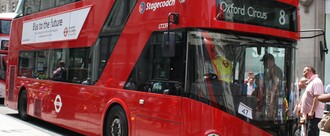__Regent_Street_Bus_Cavalcade_(1)_(cropped).jpg)
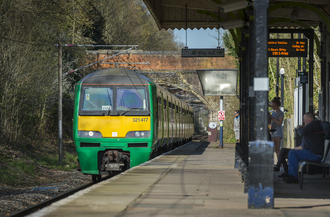

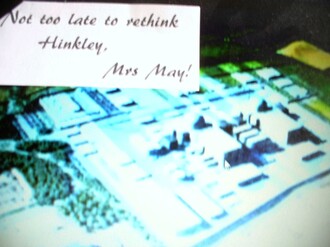
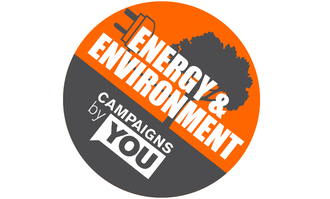
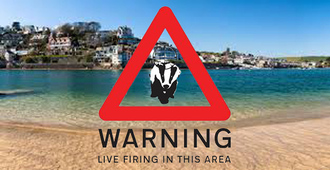


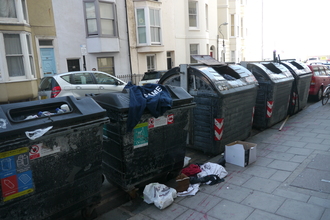
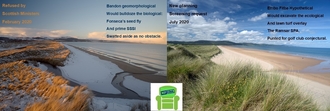.jpg)
